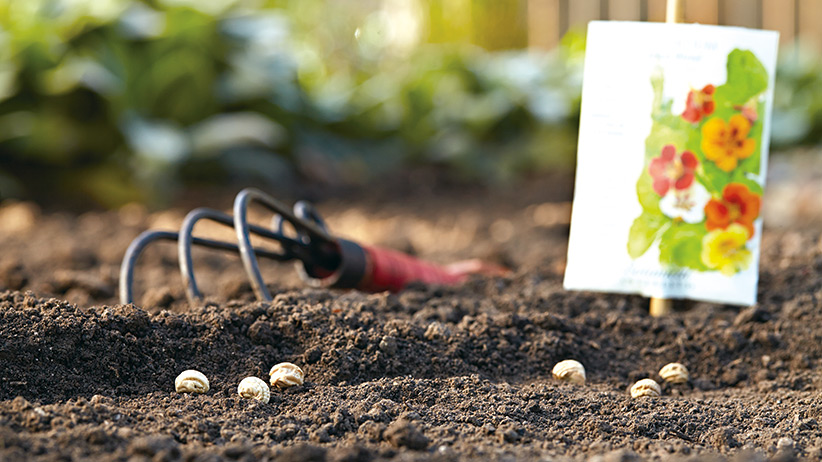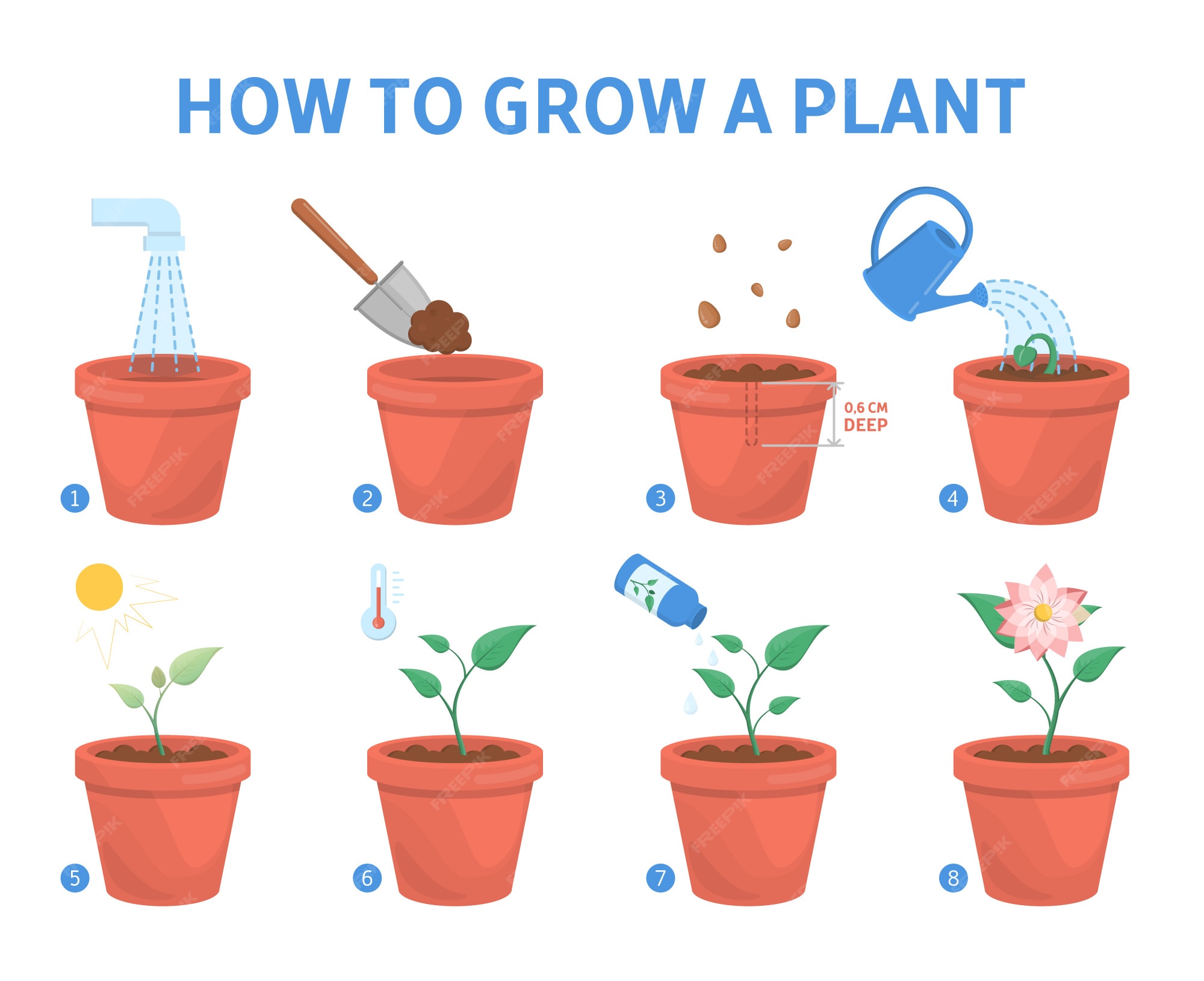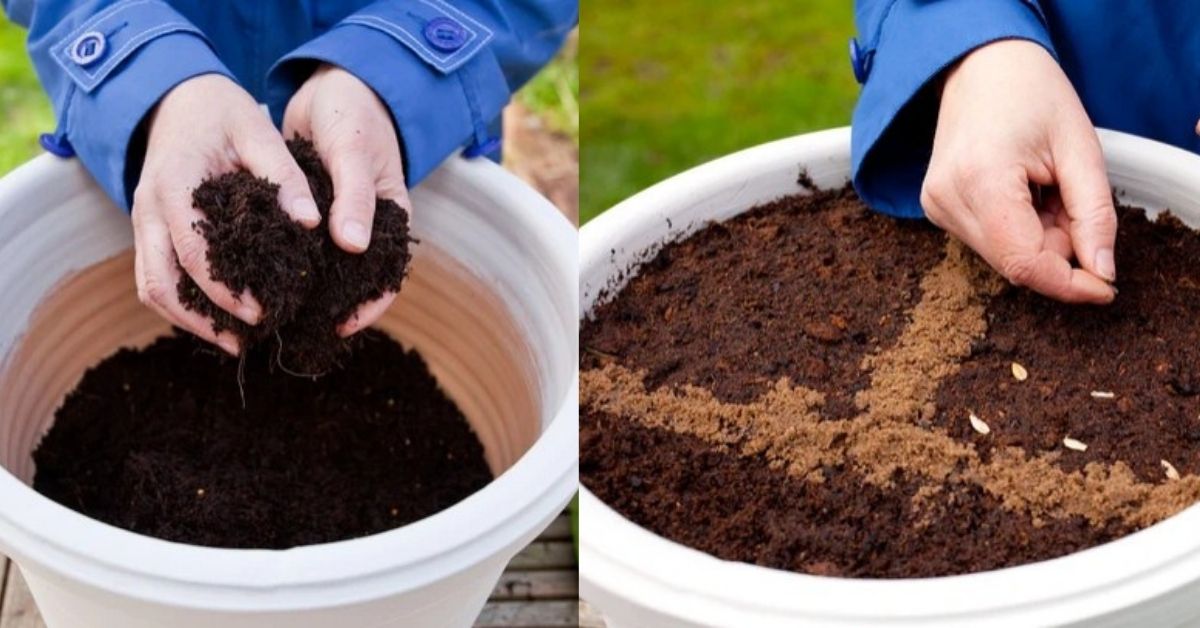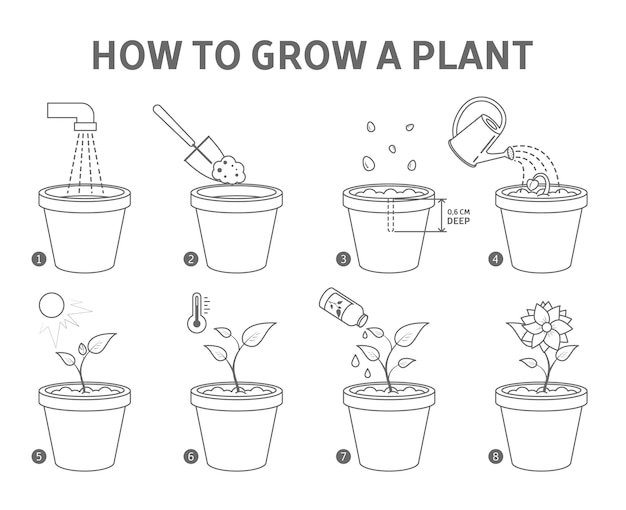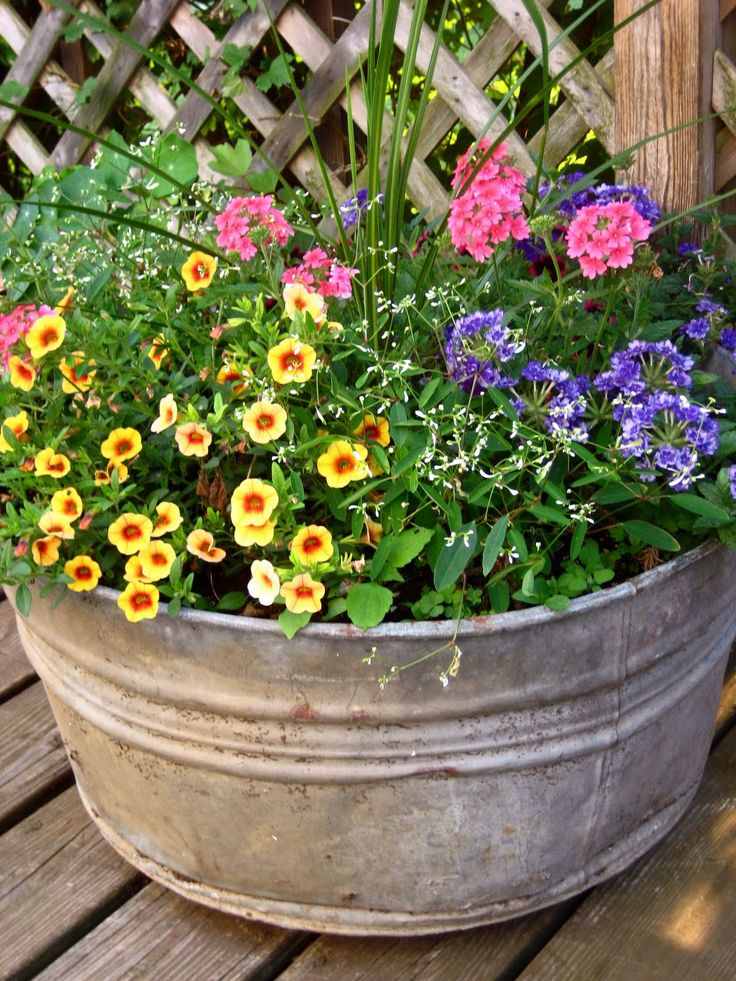Choosing the Right Pots for Your Flower Seeds
When it comes to planting flower seeds in pots, selecting the right container is crucial for the health and growth of the plants. The pot serves as the foundation for the entire growing process, and its quality can significantly impact the outcome. A well-chosen pot can provide the necessary support, drainage, and aeration for the roots to thrive, while a poorly chosen pot can lead to waterlogged soil, root rot, and stunted growth.
One of the most critical factors to consider when choosing a pot for planting flower seeds is the material. Terracotta pots, for instance, are a popular choice due to their natural, breathable properties and ability to regulate soil temperature. However, they can be prone to drying out quickly, which may require more frequent watering. Plastic pots, on the other hand, are more durable and retain moisture better, but they can retain too much water, leading to root rot.
Size is another essential factor to consider when selecting a pot for planting flower seeds. A pot that is too small can restrict root growth, while a pot that is too large can cause the soil to become too wet or dry. A general rule of thumb is to choose a pot that is at least 6-8 inches deep and has a diameter of 8-12 inches. This size provides enough room for the roots to grow without becoming too wet or dry.
Drainage is also a critical consideration when choosing a pot for planting flower seeds. A pot with poor drainage can lead to waterlogged soil, which can be detrimental to the health of the plants. Look for pots with built-in drainage holes or consider adding a layer of small rocks or broken pottery to improve drainage.
By considering these factors, you can choose the right pot for planting flower seeds and set your plants up for success. Remember, the pot is the foundation of the growing process, and a well-chosen pot can make all the difference in the health and growth of your plants.
Preparing the Perfect Potting Mix for Your Flower Seeds
When it comes to planting flower seeds in pots, using a high-quality potting mix specifically designed for containers is crucial for optimal growth and development. A well-formulated potting mix provides the necessary nutrients, aeration, and water-holding capacity for the roots to thrive. In contrast, using a low-quality potting mix can lead to poor drainage, waterlogging, and reduced plant growth.
A good potting mix for planting flower seeds in pots should contain a combination of ingredients that provide the necessary structure, fertility, and water-holding capacity. Some key ingredients to look for include peat moss, vermiculite, and perlite. Peat moss helps to retain moisture, suppress weeds, and regulate soil temperature. Vermiculite provides aeration, improves soil structure, and helps to retain nutrients. Perlite improves drainage, prevents waterlogging, and provides aeration.
When selecting a potting mix, look for a product that is specifically designed for containers and contains a balanced blend of these ingredients. Avoid using garden soil from your outdoor garden, as it can compact and prevent proper drainage in pots. If you prefer to create your own custom potting mix, you can combine the following ingredients: 40% peat moss, 20% vermiculite, 20% perlite, and 20% compost or worm castings.
Compost or worm castings add essential nutrients, improve soil structure, and support beneficial microbial activity. However, avoid using too much compost or worm castings, as they can make the potting mix too dense and waterlogged. A well-balanced potting mix should have a pH between 6.0 and 7.0, which is suitable for most flower seeds.
By using a high-quality potting mix specifically designed for containers, you can provide your flower seeds with the best possible start in life. Remember to follow the instructions on the seed package and adjust the potting mix accordingly. With the right potting mix, you can enjoy healthy, thriving plants and a stunning container garden.
How to Plant Flower Seeds in Pots for Optimal Growth
Planting flower seeds in pots can be a rewarding experience, but it requires careful attention to detail to ensure optimal growth. To get started, read the seed package carefully to understand the specific needs of the variety you are planting. Check the package for information on sowing depth, spacing, and light requirements.
Next, prepare the soil by filling the pot with a high-quality potting mix specifically designed for containers. Moisten the soil with water, but make sure it’s not too wet or dry. If the soil is too dry, the seeds may not germinate properly, while soil that’s too wet can cause the seeds to rot.
Sow the seeds at the correct depth and spacing, as indicated on the seed package. Cover the seeds with a thin layer of soil, and gently firm the soil to ensure good contact with the seeds. Water the soil gently but thoroughly, making sure not to wash away the tiny seeds.
After sowing the seeds, provide the right conditions for germination and growth. Most flower seeds require warmth, light, and moisture to germinate. Place the pot in a location with bright, indirect light, and maintain a consistent temperature between 65-75°F (18-24°C). Keep the soil consistently moist, but not waterlogged.
Some flower seeds, such as petunias and marigolds, require light to germinate, while others, such as zinnias and sunflowers, require darkness. Check the seed package for specific instructions on light requirements.
When handling delicate seeds, it’s essential to be gentle to avoid damaging them. Use a small spoon or seed starting tray to sow the seeds, and avoid touching the seeds with your bare hands, as the oils from your skin can inhibit germination.
Common mistakes to avoid when planting flower seeds in pots include overwatering, underwatering, and not providing enough light. Check the soil daily, and water only when the top inch of soil feels dry to the touch. Avoid getting water on the leaves or crown of the plant, as this can cause rot and other problems.
By following these steps and tips, you can successfully plant flower seeds in pots and enjoy a beautiful and thriving container garden.
Providing the Right Conditions for Germination and Growth
After planting flower seeds in pots, it’s essential to provide the right conditions for germination and growth. Temperature, light, and humidity are critical factors that can affect the success of your container garden. Most flower seeds require a consistent temperature between 65-75°F (18-24°C) to germinate and grow.
Light is also a crucial factor in the growth and development of flower seeds. Different varieties have different light requirements, so it’s essential to check the seed package for specific instructions. Some flower seeds, such as petunias and marigolds, require full sun to partial shade, while others, such as impatiens and coleus, prefer partial shade to full shade.
Humidity is another important factor to consider when planting flower seeds in pots. Most flower seeds require a humid environment to germinate and grow. You can create a mini-greenhouse effect by covering the pot with a clear plastic bag or a cloche. This will help to maintain a consistent level of humidity and temperature, promoting healthy growth and development.
To create a mini-greenhouse effect, place the pot in a bright, sunny location and cover it with a clear plastic bag or a cloche. Make sure the bag or cloche is not touching the soil or the seeds, as this can cause overheating and reduce germination rates. Check the soil daily, and remove the bag or cloche when the seeds have germinated and the seedlings have two sets of leaves.
It’s also essential to provide good air circulation around the pot to prevent fungal diseases and promote healthy growth. Keep the pot at least 6-8 inches away from any walls or other objects, and avoid overcrowding the pot with too many seedlings.
By providing the right conditions for germination and growth, you can give your flower seeds the best possible start in life. Remember to monitor the temperature, light, and humidity levels, and adjust them as necessary to promote healthy growth and development.
Caring for Your Seedlings: Watering, Fertilizing, and Pruning
Once the seeds have germinated and the seedlings have emerged, it’s essential to provide them with the right care to ensure optimal growth and development. Proper watering, fertilizing, and pruning techniques can make a significant difference in the health and appearance of the plants.
Watering is one of the most critical aspects of caring for seedlings. Overwatering can be detrimental, causing the roots to rot and the plant to become susceptible to disease. On the other hand, underwatering can cause the plant to become stressed, leading to poor growth and reduced flowering. The key is to find a balance, watering the seedlings when the top inch of soil feels dry to the touch. It’s also essential to avoid getting water on the leaves to prevent fungal diseases.
Fertilizing is another crucial aspect of caring for seedlings. A balanced, water-soluble fertilizer can provide the necessary nutrients for healthy growth and development. It’s essential to follow the instructions on the fertilizer package and avoid overfertilizing, which can cause more harm than good. Organic fertilizers, such as fish emulsion or compost tea, can also be used to provide a natural source of nutrients.
Pruning is also an essential part of caring for seedlings. Pruning helps to control the shape and size of the plant, promotes healthy growth, and encourages blooming. It’s essential to prune the seedlings when they are young, removing any weak or spindly growth. This will help to promote a strong, bushy plant with plenty of blooms.
When planting flower seeds in pots, it’s essential to remember that the seedlings will require more frequent watering and fertilizing than established plants. The soil in pots can dry out quickly, and the seedlings will need more nutrients to support their rapid growth. By following these tips and providing the right care, you can help your seedlings thrive and enjoy a stunning display of blooms.
In addition to watering, fertilizing, and pruning, it’s also essential to provide the seedlings with the right amount of light and temperature. Most flower seeds require bright, indirect light to germinate and grow. Placing the pots in a sunny windowsill or under grow lights can provide the necessary light. Temperature is also critical, with most flower seeds requiring daytime temperatures between 65-75°F (18-24°C) and nighttime temperatures around 55-65°F (13-18°C).
By following these tips and providing the right care, you can help your seedlings thrive and enjoy a stunning display of blooms. Remember to be patient, as growing plants from seed can take time. With the right care and attention, you can enjoy a beautiful and thriving container garden.
Common Mistakes to Avoid When Planting Flower Seeds in Pots
Planting flower seeds in pots can be a rewarding experience, but it’s not without its challenges. Even with the best intentions, mistakes can happen, and they can be costly. By being aware of the most common mistakes, you can take steps to avoid them and ensure a successful container gardening experience.
One of the most common mistakes when planting flower seeds in pots is using old seeds. Seeds have a limited shelf life, and using old seeds can significantly reduce the chances of successful germination. Always check the expiration date on the seed package and use fresh seeds for the best results.
Another mistake is not providing enough light for the seedlings. Most flower seeds require bright, indirect light to germinate and grow. Placing the pots in a sunny windowsill or under grow lights can provide the necessary light. However, be careful not to expose the seedlings to direct sunlight, which can cause scorching.
Not hardening off seedlings is another common mistake. Hardening off is the process of gradually exposing the seedlings to outdoor conditions, such as wind, sun, and temperature fluctuations. This helps to toughen up the seedlings and prepares them for outdoor conditions. Without hardening off, the seedlings may be shocked by the sudden change, leading to poor growth or even death.
Overwatering is also a common mistake when planting flower seeds in pots. Seedlings are susceptible to root rot and other problems if the soil is too wet. Check the soil regularly, and only water when the top inch of soil feels dry to the touch. Avoid getting water on the leaves to prevent fungal diseases.
Using the wrong potting mix is another mistake to avoid. A high-quality potting mix specifically designed for containers is essential for healthy growth and development. Avoid using garden soil from the yard, as it can compact and prevent proper drainage.
Not providing enough nutrients is also a common mistake. Seedlings require a balanced diet of nutrients to grow and thrive. Use a balanced, water-soluble fertilizer to provide the necessary nutrients. Organic fertilizers, such as fish emulsion or compost tea, can also be used to provide a natural source of nutrients.
By being aware of these common mistakes, you can take steps to avoid them and ensure a successful container gardening experience. Remember to use fresh seeds, provide enough light, harden off seedlings, avoid overwatering, use the right potting mix, and provide enough nutrients. With a little care and attention, you can enjoy a stunning display of blooms from your container garden.
Troubleshooting common problems is also essential when planting flower seeds in pots. If you notice any problems, such as yellowing leaves, black spots, or poor growth, take action immediately. Research the problem, and take steps to correct it. This may involve adjusting the watering schedule, providing more light, or using organic pest control methods.
Preventing problems from happening in the first place is also crucial. This involves providing the right conditions for germination and growth, including temperature, light, and humidity. By creating a mini-greenhouse effect using plastic bags or cloches, you can provide the necessary conditions for successful germination and growth.
Popular Flower Seeds for Containers: A Beginner’s Guide
When it comes to planting flower seeds in pots, there are many varieties to choose from. Some flowers are easier to grow than others, and some are more suitable for containers than others. In this section, we’ll introduce some popular flower seeds for containers that are perfect for beginners.
Petunias are one of the most popular annuals for containers. They come in a variety of colors, including pink, purple, white, and red. Petunias are easy to grow and can thrive in partial shade to full sun. They require minimal care and can be trained to cascade down the sides of the pot or grow upright.
Marigolds are another popular choice for containers. They are easy to grow and can thrive in full sun to partial shade. Marigolds come in a variety of colors, including yellow, orange, and red. They are also known for their strong, pungent scent, which can help to repel pests.
Zinnias are a popular choice for containers because they are easy to grow and come in a variety of colors. They can thrive in full sun to partial shade and require minimal care. Zinnias are also a great choice for attracting butterflies and hummingbirds to the garden.
Other popular flower seeds for containers include snapdragons, sunflowers, and daisies. Snapdragons are tall and stately, and can add a dramatic touch to any container garden. Sunflowers are easy to grow and can thrive in full sun to partial shade. Daisies are a classic choice for containers and come in a variety of colors, including white, pink, and yellow.
When choosing flower seeds for containers, it’s essential to consider the growing conditions and the amount of care the plants will require. Some flowers, such as petunias and marigolds, are low maintenance and can thrive in a variety of conditions. Others, such as sunflowers and snapdragons, may require more care and attention.
It’s also essential to consider the size of the pot and the mature size of the plants. Some flowers, such as zinnias and daisies, can grow quite large and may require a larger pot. Others, such as petunias and marigolds, can thrive in smaller pots and can be used to create a beautiful, compact container garden.
By choosing the right flower seeds for containers, you can create a beautiful and thriving container garden. Remember to consider the growing conditions, the amount of care the plants will require, and the size of the pot and the mature size of the plants. With a little care and attention, you can enjoy a stunning display of blooms from your container garden.
Planting flower seeds in pots can be a fun and rewarding experience. By following the tips and guidelines outlined in this article, you can create a beautiful and thriving container garden. Remember to choose the right flower seeds for containers, provide the right growing conditions, and enjoy the beauty and fragrance of your blooms.
Creating a Stunning Container Garden: Tips and Inspiration
Now that you’ve learned the basics of planting flower seeds in pots, it’s time to think about creating a stunning container garden. With a little creativity and inspiration, you can turn your pots into beautiful works of art that add color, texture, and interest to your outdoor space.
One of the key elements of creating a stunning container garden is combining different plants. By choosing plants with different textures, colors, and growth habits, you can create a visually interesting and dynamic display. For example, you could pair a tall, upright plant like a sunflower with a trailing plant like a petunia or a creeping Jenny.
Another way to add interest to your container garden is to use decorative pots. Instead of using plain, terra cotta pots, try using pots with unique shapes, colors, or textures. You could also use planters made from natural materials like wood or stone, or try using unconventional containers like old boots or colanders.
Accessories like trellises and stakes can also add a touch of elegance to your container garden. Trellises can provide support for climbing plants like clematis or morning glories, while stakes can help to keep tall plants upright and add a decorative element to the pot.
Lighting can also play a big role in creating a stunning container garden. Consider using solar-powered lights or string lights to add a warm and welcoming glow to your pots. You could also try using lanterns or candles to create a cozy and inviting ambiance.
Finally, don’t be afraid to experiment and have fun with your container gardening journey. Try new things, take risks, and see what works for you. Remember, the most important thing is to have fun and enjoy the process of creating something beautiful.
Some popular container gardening ideas include:
- Creating a themed garden, like a tropical garden or a garden inspired by a particular color or style
- Using a variety of plants with different textures and colors to create a visually interesting display
- Incorporating decorative elements like statues, bird baths, or other garden ornaments
- Using a mix of annuals and perennials to create a dynamic and changing display
- Creating a container garden that attracts wildlife, like birds or butterflies
By following these tips and ideas, you can create a stunning container garden that adds beauty and interest to your outdoor space. Remember to have fun and be creative, and don’t be afraid to try new things and take risks.
Planting flower seeds in pots is just the beginning of your container gardening journey. With a little creativity and inspiration, you can turn your pots into beautiful works of art that bring joy and beauty to your life.




